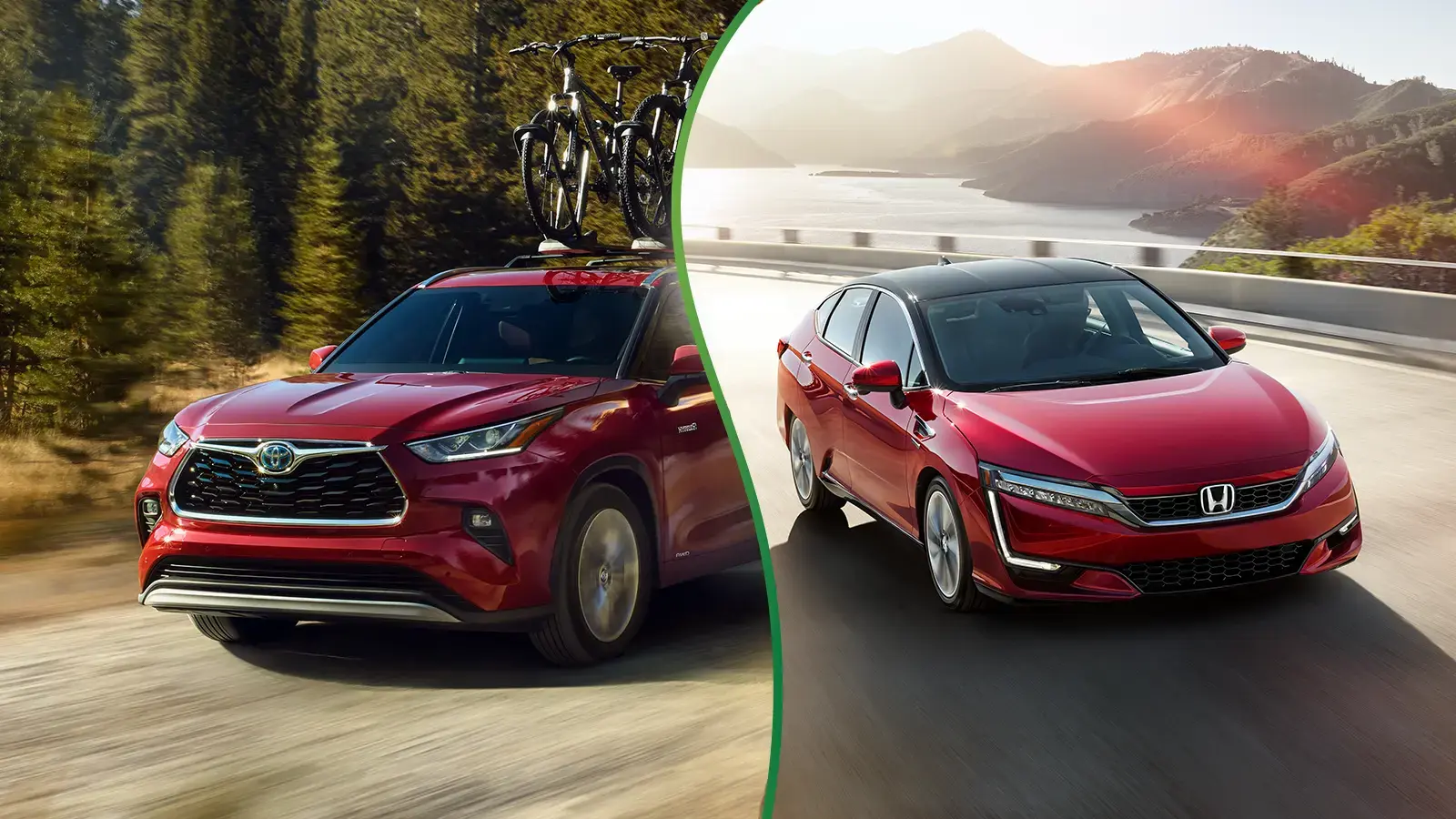Your Go-To Glossary for Electric and Electrified Vehicles
Green vehicle technology comes with a lot of jargon. From drivetrain types and battery chemistries to charging levels and efficiency ratings, the terminology can be overwhelming, especially if you're new to the world of hybrids, plug-in hybrids, and EVs.
This guide explains the most important terms and acronyms used across the GreenCars platform. Bookmark it, and refer back as needed while shopping, comparing, or learning about the future of mobility.
Powertrains and Vehicle Types
- ICE (Internal Combustion Engine) A traditional gasoline or diesel engine. Non-electric.
- HEV (Hybrid Electric Vehicle) A car with both an internal combustion engine and a battery-powered electric motor. It cannot be plugged in, charging through braking and the gas engine.
- PHEV (Plug-in Hybrid Electric Vehicle) Similar to a hybrid, but with a larger battery that can be recharged by plugging in. Offers electric-only driving for short trips and gasoline power for long distances.
- BEV (Battery Electric Vehicle) A fully electric car with electric motors instead of a gasoline engine. Powered entirely by a rechargeable battery pack.
- FCEV (Fuel Cell Electric Vehicle) Uses compressed hydrogen to generate electricity via a fuel cell. The only emissions are water vapor.
- EREV (Extended-Range Electric Vehicle) A mostly electric car with a small backup gasoline engine that powers the battery or motor when needed.
Charging and Energy Terms
- kWh (Kilowatt-Hour) The unit of energy used to measure battery capacity. More kWh = more range.
- kW (Kilowatt) Measures power output or consumption rate—how fast energy is transferred or used.
- Level 1 Charging Plugging into a standard 120V wall outlet. Adds about 3–5 miles of range per hour.
- Level 2 Charging Uses a 240V outlet, like a clothes dryer or EV charging station. Adds 20–30+ miles of range per hour.
- DC Fast Charging (Level 3) High-powered public chargers that rapidly add range (often 100+ miles in 20–30 minutes).
- J1772 The standard plug used for Level 1 and Level 2 charging in North America.
- CCS (Combined Charging System) A DC fast-charging connector common among many EVs in North America.
- CHAdeMO A fast-charging connector used in some earlier EVs (e.g., Nissan Leaf). Slowly being phased out.
- NACS (North American Charging Standard) The Tesla-developed connector being adopted by other automakers for its compact design and excellent charging speed.
Battery and Tech Acronyms
- BMS (Battery Management System) Software that regulates battery performance, temperature, charging, and safety.
- SOC (State of Charge) The current battery level expressed as a percentage.
- SOH (State of Health) A measure of battery condition compared to when it was new.
- Li-ion (Lithium-Ion Battery) The most common battery chemistry in EVs due to its high energy density.
- LFP (Lithium Iron Phosphate) A type of lithium battery known for longer lifespan and thermal stability.
- NiMH (Nickel Metal Hydride) Used in some older hybrids; now mostly replaced by lithium-ion packs.
- Regen (Regenerative Braking) System that recaptures braking energy and returns it to the battery.
Efficiency and Environmental Labels
- MPGe (Miles Per Gallon Equivalent) A measure of how far an EV can travel on the energy equivalent of one gallon of gasoline.
- CO₂e (Carbon Dioxide Equivalent) Used to express total greenhouse gas emissions in a single value.
- ZEV (Zero-Emission Vehicle) A vehicle that produces no tailpipe emissions, such as a BEV or FCEV.
- ULEV / SULEV / PZEV Ultra-low, super ultra-low, and partial zero-emissions vehicle ratings for very clean-running cars, especially hybrids.
Smart Features and Future Tech
- V2G (Vehicle-to-Grid) Technology that allows EVs to send power back to the electrical grid.
- V2H / V2L (Vehicle-to-Home / Vehicle-to-Load) Systems that power a home or devices using the energy stored in an EV battery.
- OTA (Over-the-Air Updates) Software improvements sent wirelessly to the vehicle, adding features or fixing bugs.
- ADAS (Advanced Driver-Assistance Systems) A suite of safety features like adaptive cruise control, lane-keeping assist, and emergency braking.
Common Industry Terms
- Range Anxiety The worry that your EV won’t have enough battery to reach your destination.
- Charging Curve A graph showing how charging speed slows down as the battery fills.
- Home Charger / EVSE (Electric Vehicle Supply Equipment) The device you use to charge your EV at home.
- TCO (Total Cost of Ownership) A calculation of all costs over a vehicle’s lifetime, including fuel, maintenance, and depreciation.
Bookmark It, Share It, Use It Often
As green car technology continues to evolve, so will the vocabulary. Whether you're exploring your first hybrid or comparing new EVs, understanding these terms will help you feel more confident and able to make smarter choices.
Your GreenCars Journey Continues
Decode the terminology so you can shop and drive with confidence:
← Go Back: Intro to Green Car Technology
Discover Next: Types of Green Cars: From Gas Savers to Full Electrics →












